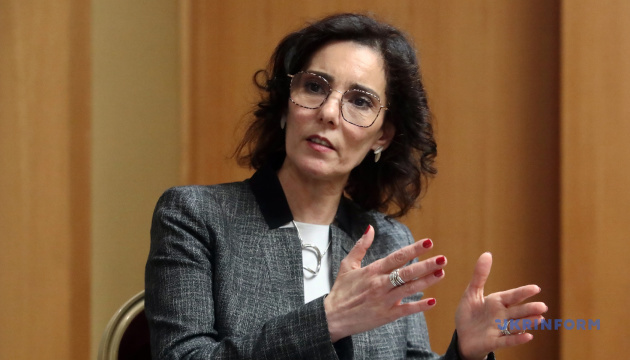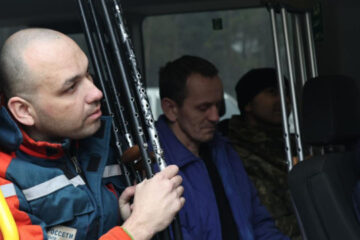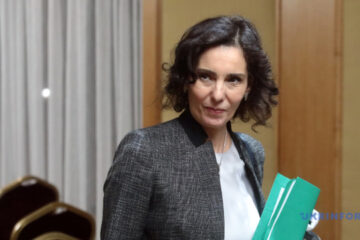WE ARE FOCUSING ON WINTERIZATION
– We got the big news out a bit earlier today, the European Union’s EUR 148 million humanitarian assistance package for Ukraine. And you’re here on your first international visit as Commissioner for Crisis Management. What areas do you think need the most attention from the international community, including from the EU, when it comes to humanitarian aid to Ukraine in the third year of the big war?
– Many areas need our attention. The needs are immense. Today, one out of three Ukrainians, which is around 13 million people, are in need of humanitarian aid. This is what the EU and OCHA predict for this year. So the international community must keep Ukraine high on its humanitarian agenda. The fact that I’m here for my first mission as a Commissioner for crisis management, preparedness and equality shows our strong commitment to keep Ukraine high on our agenda and that our engagement will continue in critical sectors, such as water and sanitation, health, humanitarian protection, and education in emergencies.
Now we are also focusing on what we call winterization. Practically, we are giving cash assistance for Ukrainians to buy fuel, firewood to get through this winter, the third one in this terrible situation. This is our priority. We are also focusing on the energy capacity. Through the EU Civil Protection Mechanism, we have been able to deliver more than 8000 generators to strengthen your energy capacity.
What we are also trying to do right now is localization and transition to early recovery. We want to help the Ukrainian social system to be even more efficient, so we’re working with local authorities to this end.
– You touched upon education, uh, you’ve been on the ground while you were here in Ukraine. How do you see the education process right now, especially in the areas often subjected to Russian strikes?
– I had the chance to visit yesterday Lyceum 2 in Nizhyn in Chernihiv region, where I was supposed to see the whole school but I was almost immediately obliged to proceed to the shelter. If there is a school offering in-person classes somewhere, it’s because there is a shelter. Throughout the war, 365 school buildings have been completely destroyed by the Russians, in total violation of international humanitarian law; 3,700 educational institutions have been bombed or shelled, and now the important thing is to allow children to go back to school.
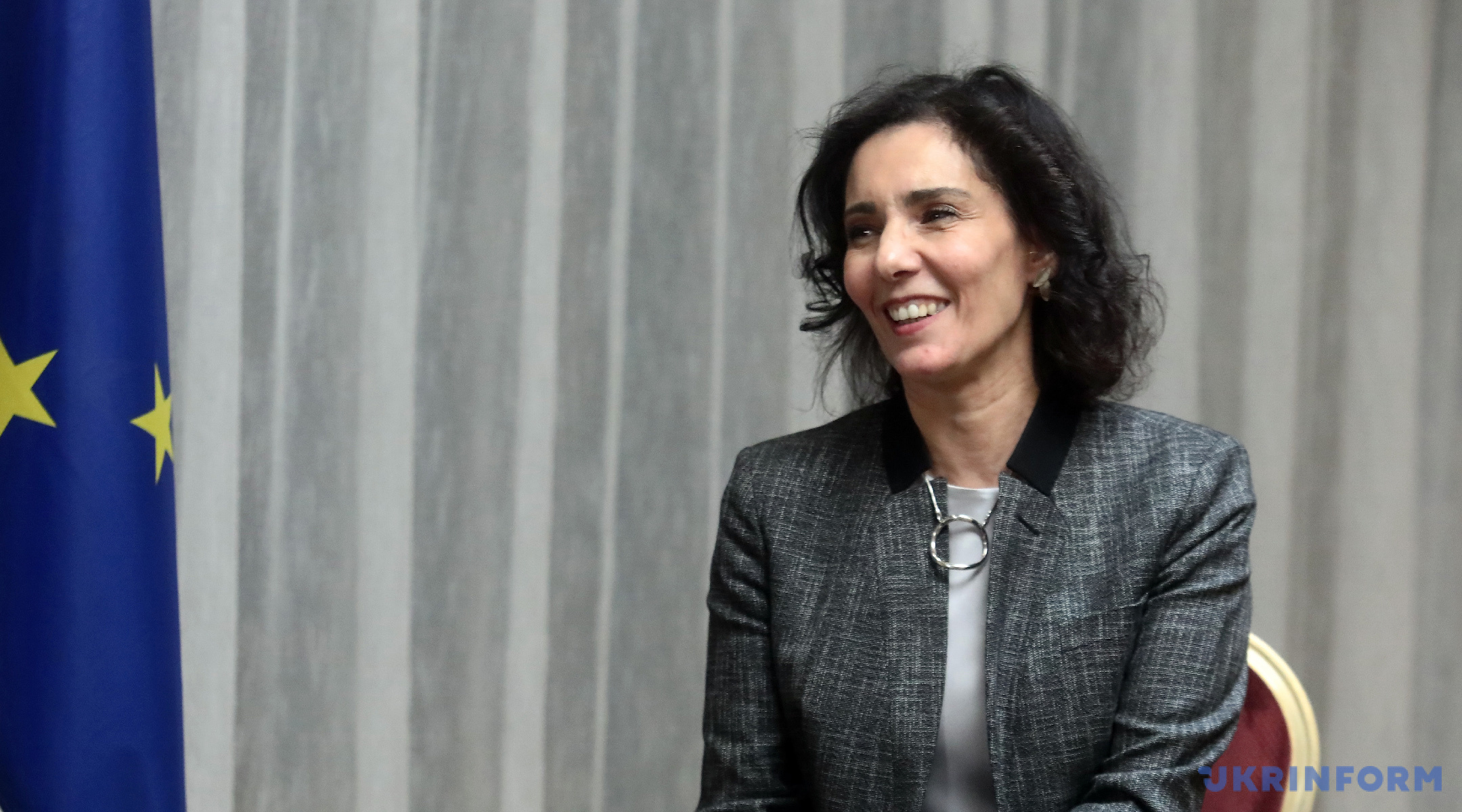
Ukrainian schoolchildren have been impacted by two years of COVID-19 and then, immediately after that, three years of war. It means that some of them don’t know what it is to go to school in normal time. They don’t know what face-to-face learning is, and this creates a long-term impact. This shows the importance to have shelters for their safety, to develop new strategies for their learning to allow children and teenagers attend schools and go to universities.
Also while in Nizhyn, I met with your Deputy Minister of Education, who underlined the need to restore and maintain the high level of university education in Ukraine. You have very high-standard universities, but with the impact of war, the danger is to see the level going down because of the war-driven brain drain. Part of our strategy in the Commission is allocate a significant amount of humanitarian aid on education in emergencies. Because education is not a luxury. It’s a basic humanitarian right that we want to defend.
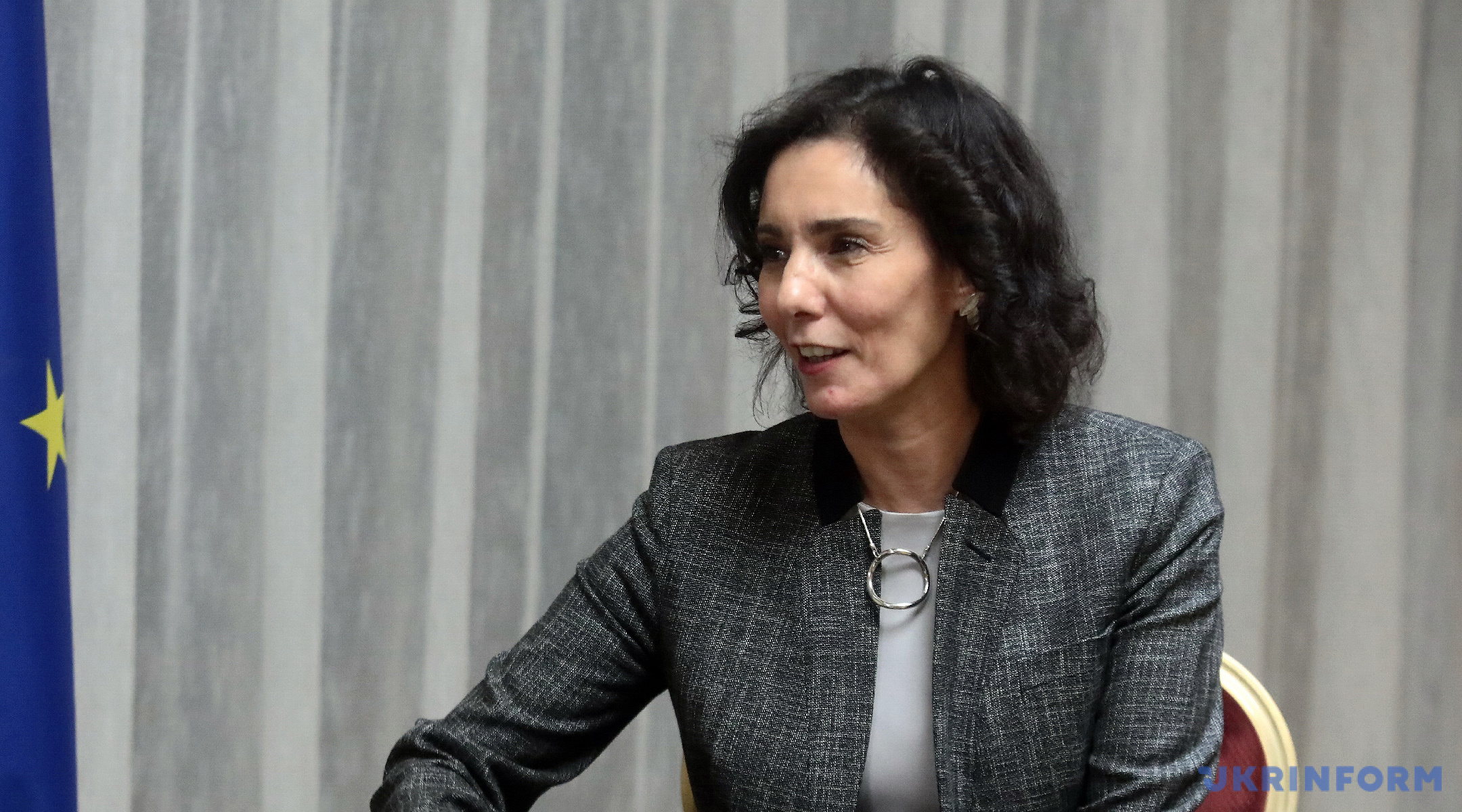
IN THE USE OF HUMANITARIAN AID, PRIORITIZATION AND COORDINATION ARE KEY
– How does the EU assess the effectiveness of the utilization of humanitarian aid already provided to Ukraine?
– I met civil society representatives, NGOs, and with UN humanitarian agencies ., They all requested to strengthen coordination mechanisms, to avoid duplication and to have a good assessment of the needs. What I saw yesterday is that there’s progress to this end. We are focusing on the most fragile, most vulnerable groups, including the elderly, women and girls, and children who traditionally are the first victims of war. Of course, I’m not going to forget those who are in the battlefield, who are naturally the primary victims because they lead the battle, but there are a lot of civilians, internally displaced people, who need help. Sometimes they find themselves as far as 600 km from what used to be their home, and they need to recreate their social networks.
At one of the resilience centres that we are supporting, I met Tamara, a 89 years old lady, and she is an example of resilience. She still goes jogging every morning, telling herself repeatedly in front of the mirror that she is the best, she will survive. Still so young and beautiful, she found herself in a remote area, and she doesn’t know when she will be able to go back home.
According to the assessment by IOM, nearly 70 percent of the internally displaced persons are not going to go back to their original place of residence. It means that we need to think in the long term. What are we going to do for those people? And especially for the disabled. This assistance might include things like improving accessibility, mobility… Also important is gynecological consultations in remote areas – on this trip I visited a mobile clinic that we also finance where first aid is offered including gynecological consultations.
So the needs are immense, and we need prioritization and better coordination. These are the keywords.
It’s also important to note that we work in the nexus. That’s starting from humanitarian aid and going through early recovery and reconstruction, helping people achieve more autonomy and longer-term resilience.
UKRAINE IS THE LARGEST BENEFICIARY OF THE EU CIVIL PROTECTION MECHANISM
– What new initiatives or humanitarian aid and civil protection programs does the EU intend to implement in Ukraine in 2025?
– When it comes to humanitarian aid, we will seek to sustain and improve our humanitarian outreach on the ground and work even more closely with local communities. Localization is another keyword when it comes to preparedness and resilience.
Ukraine is one of the beneficiaries of the EU Civil Protection Mechanism. In fact, it is here where we lead the biggest ever operation under this mechanism.
We are also strengthening capacities when it comes to CBRN (chemical, biological, radiological, and nuclear) threats and medical countermeasures. Over the past two years, the European Union has invested 1.2 billion EUR into building stockpiles of medical countermeasures, mainly to tackle CBRN threats. As the participating state of the UCPM, Ukraine has access to these stockpiles.
We are also working to strengthen the architecture of the critical medicines supply chains. We know that Ukraine has a lot of capacities and potential when it comes to the production of generic medicines and active pharmaceutical ingredients, and these can be further enhanced to strengthen our mutual resilience to health emergencies and critical medicine shortages.
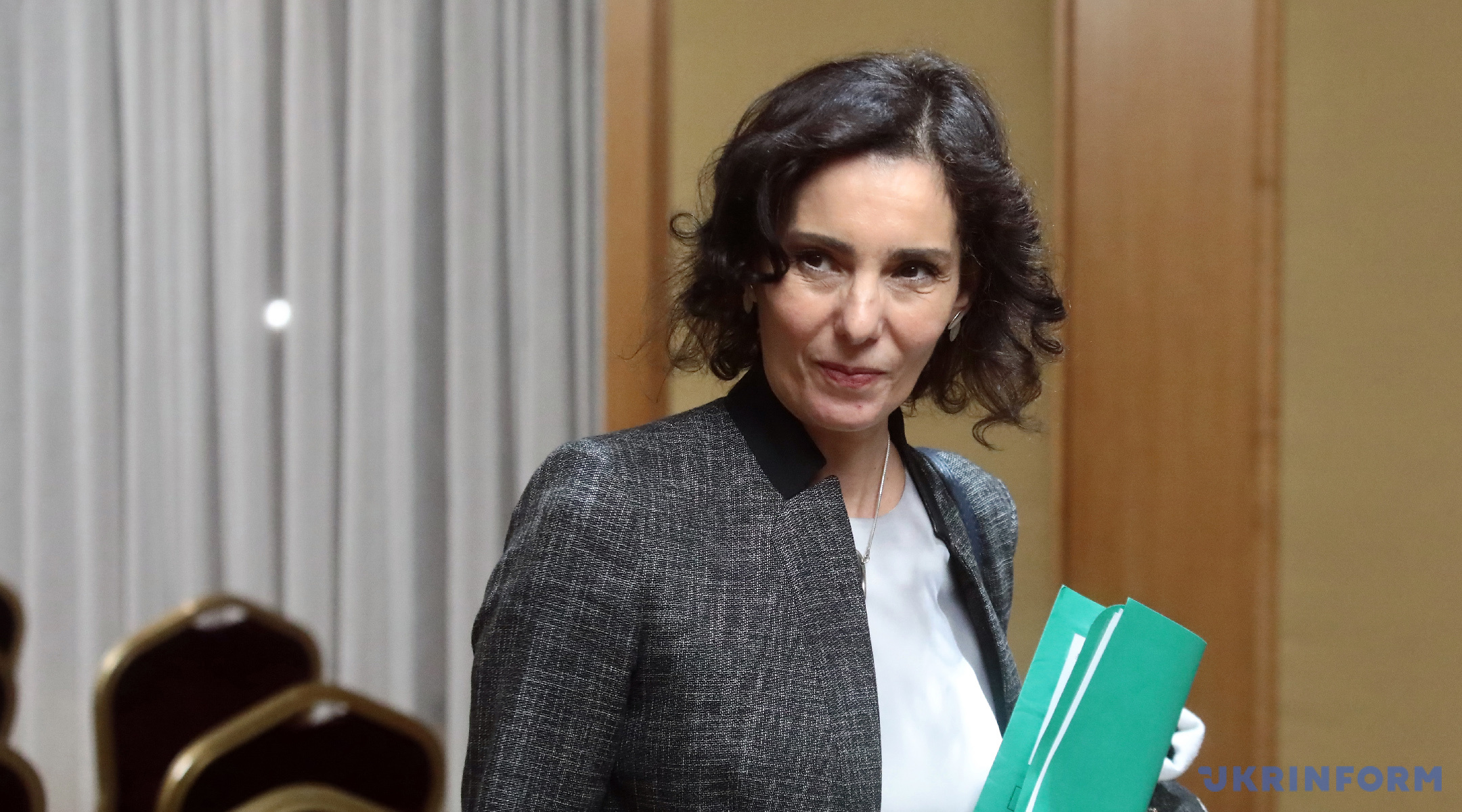
– You touched on CBRN threats… What could be done to improve readiness to respond to potential emergencies, including in this area?
– First of all, I would like to say that you are already doing a lot. I visited State Emergency Service facilities, and I was really impressed by your capacity to be agile, find new innovative ways of responding to emergencies, and to continuously adapt and improve approaches and different equipment. I was also impressed how, say, your firefighters, adapt their services to the realities of war. We know that the Russians practice double-tap strikes, when they hit the same location twice with a short interval, thus affecting the emergency response teams, so the Ukrainians developed a robotic system to try to address the issue, allowing them to operate it from a safer distance for the first responders.
– You said the winterization is one of the focuses of your work. Can you provide any specifics on what is going to be done to this end?
– Assistance comes in various forms. As I said, we provide generators of various capacities, including the latest ones that are more efficient, we provide firewood and fuel – or cash to buy it – and on the other hand we’re also working to transport to Ukraine an entire power plant donated by Lithuania. It’s a unique operation where the entire plant gets dismantled and transported on ships because the parts are so big. The operation will take months but the Commission is doing that job.
THERE IS NO UKRAINE FATIGUE
– Every year, international funding for the humanitarian response in Ukraine is becoming smaller. What should be done to keep Ukraine high on the humanitarian agenda? It can also be the case that, in the event of a peace agreement or conflict freeze, humanitarian problems will not just go away, but the lion’s share of donors will switch to other issues. Can Ukraine rely on the EU’s support for humanitarian initiatives after the ceasefire is achieved?
– First, there is no reduction of the EU budget to this end. On the contrary. As you know, I’m coming here with EUR 148 million in humanitarian aid. EUR 140 million is for Ukraine, and EUR 8 million for Ukrainian refugees in Moldova. This means it’s double the initial figures we saw last year. And it means a lot. It means we are not going to abandon Ukraine. There is no Ukraine fatigue. And the best way to raise the interest of the international community is to remind them that what’s happening in Ukraine also concerns them all. You may be at the forefront, but we are also targeted and threatened by Russia.
Of course, while we are just facing hybrid threats at the moment, your soldiers are actually fighting on the battlefield, and they are fighting for our European Union values. I visited, the Maidan square. I am well aware of the wish of the Ukrainian people to be part of the European Union, their strong willingness to have a democracy. This is one of the core Ukrainian values. Your people want to walk this path.
I’m quite impressed by the pace of progress that you have been able to make towards the EU accession, your willingness to achieve the candidate status and open the negotiations. And I’m proud to say that we opened these negotiations during Belgium’s presidency of the EU Council of Ministers, when I was Belgium’s Foreign Minister.

– We remember that!
– I also remember that historic day when we succeeded because it was a very complex issue. After all, your country is so big, including in terms of demography, but it also offers the EU so many opportunities. And it’s from this point of view that we should look at this. We are already involved in, and thinking about, reconstruction. A lot is at stake, but essentially, it’s about our values and principles of democracy.
I’m also a Commissioner for Equality, and I remember that two and a half years ago when I started my career as a Minister of Foreign Affairs, there were issues that were difficult to talk about, including violence against women, sexual aggression, and so on. But now this is something we can discuss and solve together, exchange expertise in the fields like mental health and so on.
UKRAINIANS REMAIN RESILIENT AND FUTURE-ORIENTED
– Your competences include ensuring protection of the most vulnerable strata. How do you assess the state of human rights in Ukraine in these areas?
– I see that there’s a lot of work ahead of us, but we should not forget that Ukraine is at war and there are a lot of needs that must be addressed. But, as I said earlier, the most vulnerable ones are affected in the first place. Take a situation of an internally displaced person with special needs who simply can’t physically get into a university building because it only has stairs, which restrains their mobility. I do understand though that it’s very difficult to take all such specificities into account.
We also need to help women. When I visited a mobile team providing gynecological consultations, I learned how difficult it is for women to get an appointment, to get a scan done. They just don’t go unless they get really sick. But we know that, if cancer is not diagnosed at an early stage, this may lead to dramatic consequences. We can also mention teenagers, those coming through adolescence, who have a whole set of their own problems to deal with. It’s the time of their life when they discover their personalities, try to choose their future.
But, despite all the difficulties that the Ukrainians are facing, I see that they remain resilient and future-oriented. I met a young girl who wanted to become a cosmetic surgeon. That’s a very specific goal but she seemed determined. At 12 years old, she had a very precise idea of what she wanted to become. By the way, we spoke while sheltering during an alert. I also met an older lady named Olha. She is a grandmother who has lost her son in this war and she has no news from her daughter-in-law, maybe she was also killed. And she takes care of her two grandchildren, now seeking to adopt them. People like her also need legal assistance, and so do those who fled their homes in a rush and now need to restore their paperwork, passports and such. So Ukraine’s humanitarian environment is really cross-sectoral.
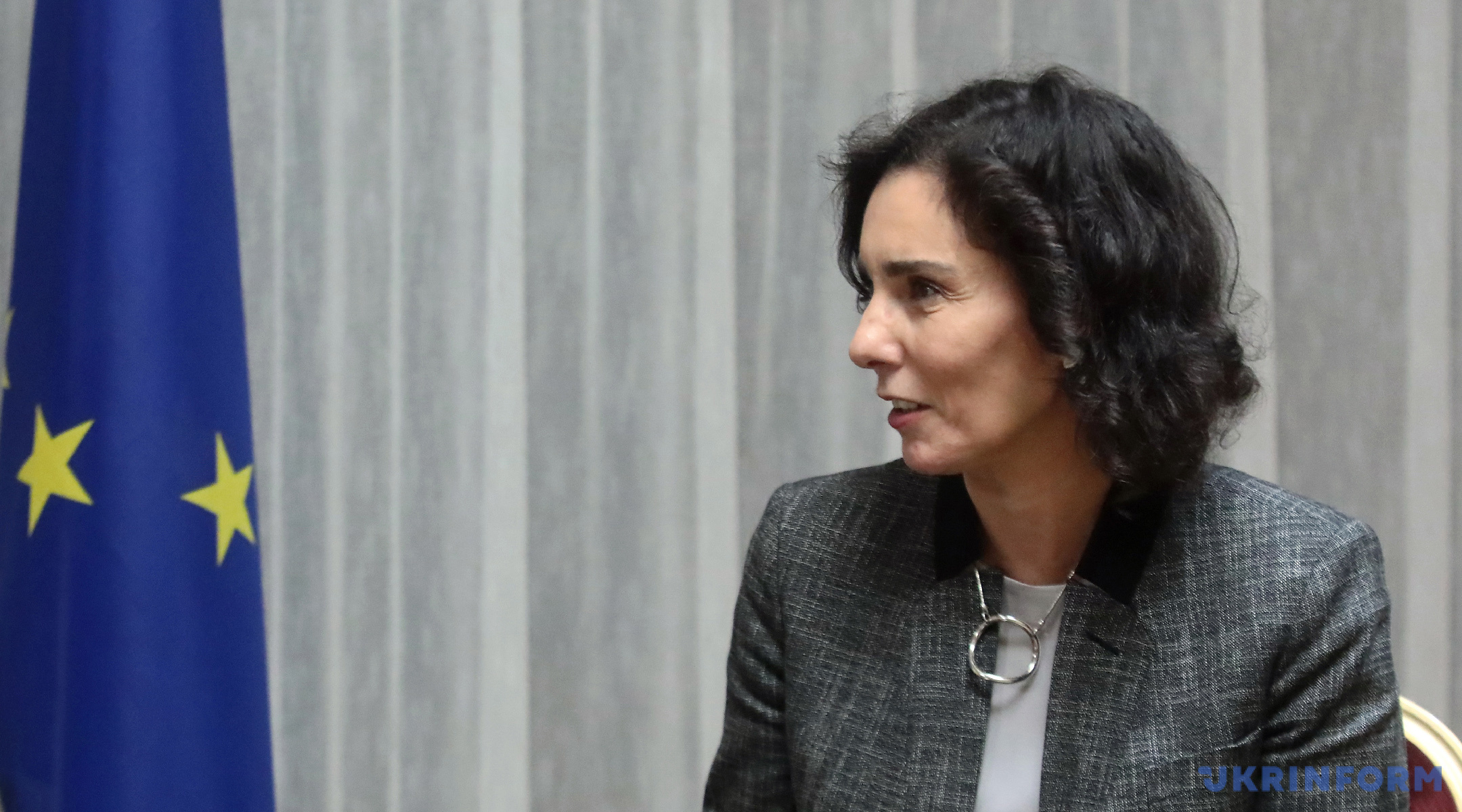
IN EUROPE, CHILDREN SHOULD BE TAUGHT CIVIL PREPAREDNESS
– Are you taking notes of Ukraine’s civil preparedness and emergency response efforts to incorporate them in your relevant strategies at the EU level?
– I’m in charge of the preparedness strategy for the European Union based on the ministers’ reports but I’m sure the EU has plenty to learn from Ukraine in terms of civil preparedness, taking on board some of the things Ukraine is doing nowadays.
I also saw your children being trained on how to react in emergency situations, for instance when there’s a fire or an enemy attack, and I believe preparedness should be taught across Europe, to create a kind of “Erasmus” for all the young people in Europe, both girls and boys aged 16 to 18, to give them preparedness lessons.
– Do you think those preparedness lessons should be part of a school curriculum?
– I think this could be an extracurricular activity. Also, it has not yet been agreed by educators, these are just some of the ideas that I have personally as a Commissioner. I had already an exchange about this idea with the Polish and French ministers. I also spoke now with the Ukrainian minister, and we are convinced that this is something that we need.
Ministers’ reports on civilian preparedness are built on the entire government’s strategy but they also have to include the entire society strategy. We need to have citizens on board. If you ask a Belgian citizen what civil preparedness is for them, they don’t have a clue because they just don’t know where the danger is now, what could be the threat tomorrow. But if you ask the same question to someone in Finland, Sweden, or Ukraine, then, of course, these people do know what it’s all about.
See, in the south of Europe, in Greece or Portugal, what comes to people’s mind in the first place is wildfires. In other regions, it may be floods. But even if those emergencies happened in the past, people tend to forget how to react anyway.
DISINFORMATION IS VERY CONTAGEOUS
– But do people tend to become more aware of the situation around them, the hybrid threats that Russia poses?
– You know, we recently had elections in the European Union, including at three different levels in Belgium, and we see that have to adopt what we call the Democracy Shield to protect all democracies from malign influence. Disinformation is a massive threat, involving social media, trolls.
What we see is that disinformation is coming from Russia. And we have also discovered that even we in Belgium have lawmakers that are linked to the extreme right, and then to Russia. Our intelligence has learned that we have been infiltrated. It means that these threats are everywhere. Threats may come from media that seek to sow confusion, incite people to a revolution against the system.
We remember well that during the Covid-19 pandemic, disinformation and conspiracy theories led some people into thinking that the vaccines are some kind of poison. In a pandemic, when someone who is not vaccinated becomes contaminated, they spread the virus, affecting more and more people. The same goes for disinformation. People who are not prepared to distinguish facts from disinformation spread it among other people, “contaminating” them too. So disinformation is very contagious, and then the “pandemic” is really hard to stop.
We need to reinforce the existing Civil Protection Mechanism because the landscape of threats constantly evolves so we need to adapt to be able to respond to hybrid threats.
Ievgen Matiushenko, Kyiv
Photo: Volodymyr Tarasov

